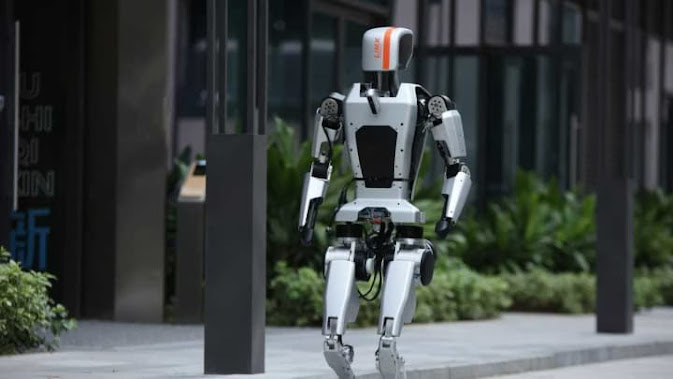The Impact of Generative AI on Human-like Robot Development and Job Market
Generative AI is speeding up human-like robot development. What that means for jobs
Shenzhen-based LimX Dynamics shows off one of its humanoid robots.
Limx Dynamics
Introduction:
Generative AI technology is revolutionizing the pace of human-like robot development, raising questions about its implications for the job market. As artificial intelligence continues to advance, its influence on various industries, including robotics, becomes increasingly profound.
Understanding Generative AI:
Generative AI refers to algorithms that can produce new data resembling input data. These algorithms analyze patterns in existing data and generate new content, such as images, text, or even music, that closely mimic the input. This technology has widespread applications, from creative content generation to improving efficiency in various tasks.
Accelerating Human-like Robot Development:
Generative AI plays a crucial role in expediting the development of human-like robots. By leveraging generative algorithms, researchers and engineers can rapidly iterate and refine designs, simulate various scenarios, and enhance the capabilities of robots to perform tasks with greater autonomy and human-like behavior. This acceleration in development is propelling the field of robotics into new frontiers.
Advancements in Human-Robot Interaction:
One area greatly influenced by generative AI is human-robot interaction (HRI). As robots become more human-like in appearance and behavior, the need for seamless interaction between humans and robots grows. Generative AI enables the creation of lifelike facial expressions, gestures, and conversational abilities, enhancing the overall user experience and acceptance of robots in various settings, including homes, workplaces, and healthcare facilities.
Implications for the Job Market:
The rapid advancement of generative AI and human-like robotics raises concerns about its impact on the job market. While these technologies create new opportunities for skilled professionals in fields such as AI development, robotics engineering, and human-robot interaction design, they also pose challenges for certain job sectors. Industries reliant on manual labor or routine tasks may face displacement as automation becomes more sophisticated.
Reshaping Employment Dynamics:
The integration of generative AI and human-like robots is reshaping employment dynamics across industries. Jobs that involve repetitive tasks or low-skilled labor are at risk of automation, potentially leading to job displacement for certain segments of the workforce. However, new roles are emerging in the design, programming, maintenance, and supervision of robotic systems, highlighting the importance of upskilling and adapting to technological advancements.
Addressing Socioeconomic Impacts:
As generative AI and human-like robots redefine the job market, addressing socioeconomic impacts becomes paramount. Governments, businesses, and educational institutions must collaborate to mitigate potential job losses through retraining programs, education initiatives, and policies that support workforce transition. Additionally, fostering innovation and entrepreneurship in emerging industries can create new avenues for job creation and economic growth.
Ethical Considerations and Regulation:
The proliferation of generative AI and human-like robots also raises ethical considerations and the need for regulatory frameworks. Concerns regarding privacy, security, autonomy, and the ethical use of AI-powered technologies require careful attention from policymakers, industry stakeholders, and the public. Establishing guidelines and standards for the responsible development and deployment of these technologies is essential to ensure they benefit society while minimizing potential risks.
Conclusion:
Generative AI is revolutionizing human-like robot development, accelerating innovation in robotics and human-robot interaction. While these advancements offer tremendous potential for enhancing productivity, efficiency, and quality of life, they also raise complex challenges, particularly in the realm of employment and socioeconomic dynamics. By addressing these challenges proactively and collaboratively, society can harness the benefits of generative AI and human-like robots while navigating the evolving landscape of the job market.
Disclaimer:
The information provided in this article is for informational purposes only and should not be construed as professional advice. While every effort has been made to ensure the accuracy and completeness of the content, we make no representations or warranties of any kind, express or implied, about the completeness, accuracy, reliability, suitability, or availability with respect to the article or the information, products, services, or related graphics contained in the article for any purpose. Any reliance you place on such information is therefore strictly at your own risk. We disclaim any liability for any loss or damage, including without limitation, indirect or consequential loss or damage, or any loss or damage whatsoever arising from loss of data or profits arising out of, or in connection with, the use of this article. The inclusion of any links does not necessarily imply a recommendation or endorse the views expressed within them.




Comments
Post a Comment